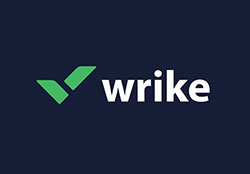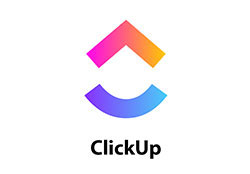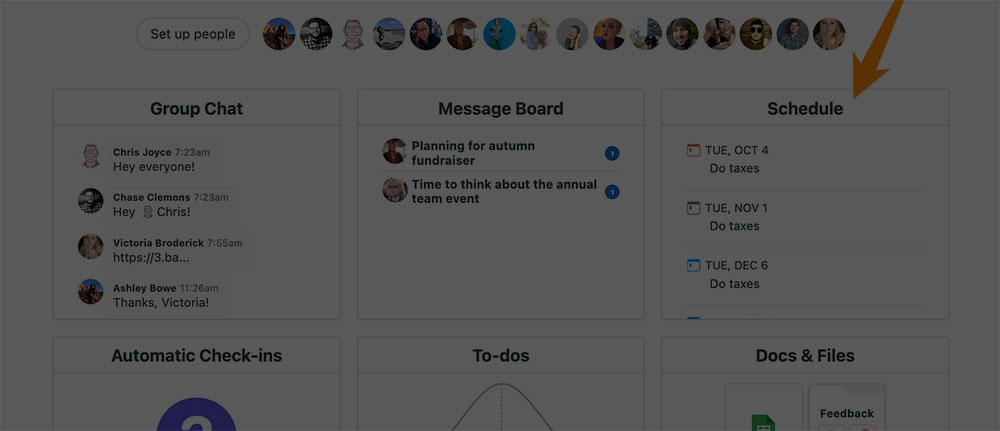Time is the currency in the realm of project management, and grasping forward pass techniques could become your secret powerhouse.
Imagine untying the complex knots of project scheduling, with each thread representing a potential path to successful completion.
In demystifying the forward pass, a linchpin in the Critical Path Method (CPM), we cast a light on how to unveil the earliest moments each project phase could kick off and wrap up.
By journeying through this article, you’ll inherit the tools to not only forecast project timelines with precision but also navigate the intricate web of task sequencing and milestone tracking.
The information here is your map to transforming a cloud of activity durations and dependencies into a clear, actionable project lifecycle.
Expect to absorb:
- The ABCs of forward pass calculations in project scheduling.
- Techniques to optimize your Gantt chart fluency.
- Strategies for employing software like Microsoft Project to streamline your planning.
Before you reach the final period, you’ll have unlocked a door to efficiency that many assume is barred without specialized training. Let’s embark.
Key takeaways
- Defining Forward Pass: The forward pass is a scheduling technique used in project management to find the earliest possible start and finish times for each project activity, based on activity durations and dependencies.
- Utility in Project Management: It is used for determining the critical path of the project, which is essential for identifying the sequence of tasks that dictate the overall project duration.
- Purpose and Benefits: The primary goal of the forward pass is to assist in scheduling and resource allocation by identifying tasks with slack and those that are critical, aiding in accurate prediction of project length and potential scheduling issues.
- Contrast with Backward Pass: Unlike the backward pass, which starts from the project’s end date to determine the latest start and finish times for tasks, the forward pass starts from the beginning of the project to find the earliest completion dates.
The Project Stages
In short, a project comprises chains of activities. To summarize the completion date of the project, the project manager sets deadlines for a given task. Next, the project team notes which activity requires the completion of the preceding activity.
Estimate the Completion Date
Calculation methods show the project’s duration in time units. Such business periods are the key to a practical project schedule. This estimation applies to all types of tasks.
Prior Tasks
Some tasks cannot begin before the previous task is complete. Hence, successor activities rely on the good outcome of a key individual activity. Also, a predecessor activity can have many successor tasks.
Therefore, identify which tasks depend on the completion of some other task. This will allow you to sort them in chronological order. Next, insert the usual activity duration for the prior task and the possible latest date in the schedule. You can use project management software for this purpose.
Follow-Up Tasks
Before the team can tackle a successor task, the previous task must fully finish. Various technical and organizational factors affect this workflow.
Aim for a Head Start
To discover which task can begin earlier than estimated, consider the overall completion rate. Usually, you can assign most of the predecessor activities an early start date.
For best results, convert such work milestones into calendar days. This will show the relations between tasks more clearly.
Earliest Finish Dates
Besides certain schedule constraints, some tasks can finish before the projected end date. Hence, that is their early finish date value.
In an ongoing workflow, the plan can change regarding those opportunities.
Example of a Common Workflow
- The first activity can start one day earlier. So, its early start date is the first day (ES=1). As for duration, it will last for two days. Hence, its early finish date is the second day of the project (EF=2).
- The second-in-line task begins on the third day and continues for five more. Thus, its dates stand as ES=3 and EF=7.
- The third date is also the starting point for the third activity. However, that one lasts for eight days. That means ES=3, while EF=10.
- The second task (EF=8) is a predecessor activity for the fourth task that should start on the eighth day. That task lasts for two days, so its values read EF=8; EF=9.
- The fifth activity lasts for five days but is a dependency task on both the third and fourth activities. As such, its start date cannot arrive before both of them are complete. So, the earliest date it can start is after the tenth working day since the third task reads EF=10. Hence, the final activity has these values: ES=11 and EF=16.
Make Up for Any Lost Time
To cover all fronts, note the latest possible date you can start an activity without severe issues. If all goes well, even that last resort will not cause you to miss the final deadline.
Thus, forward pass in project management is a great tool for keeping everything in check.
Set a Late Finish Date
This refers to the latest date you can finish an activity without upsetting the initial plan. So, the late finish date for all tasks will be the same as the project’s end date.
Here’s how to calculate those values for a given project task:
- Its late start date = the late finish date minus the activity duration plus a value of 1
- Its late finish date = the last start date of the successor task minus a value of one
In that way, you’ll use the forward and backward pass to hone in on the project completion date.
Note the Total Float Time
This is the detraction from a task’s possible early and late start dates. In other words, it’s the amount of leeway you have before you start losing time.
Calculate the Free Float Values
Some predecessor activities can drag on for a bit without delaying the later task’s start date. This is the free float time that you can use to ensure the follow-up tasks finish on time.
Highlight the Zero Float Tasks
Certain tasks are critical for the project’s on-time completion. Therefore, you must avoid tempering those deadlines as much as possible. Otherwise (this applies to the free float values, too), they might negatively affect the project’s end date.
To avoid such errors, there are several check-ups you can perform. For example, start by comparing the total float and free float values. Note that the activity can have a total float value greater or equal to its free float time.
So, to stay on the critical path, ensure no activity has a free float value larger than the total float. Also, negative numbers should not appear for any scheduled activity.
Are you looking for a great project management app?
Here are our recommendations:
Forward Pass in Project Management – Potential Issues
Forward pass in project management is about securing an optimal project duration. It includes grouping early start dates and aiming for short task duration. However, there are a few possible pitfalls lying in wait.
Miscalculations: Project managers can sometimes oversee a key aspect. Hence, such an error will upset the integrity of the entire initial plan. Only a prolonged review period can catch such mixups on time. That also warrants another planning period to iron them out.
External conditions: You might miss a deadline due to various external developments. Things like sudden power outages or bad weather can halt any workflow. These are often hard to predict and prepare for. However, once the project team is aware of them, they can work on damage control.
Easy to get yourself into a corner: A streak of missed deadlines can keep on multiplying itself. As such, they can throw you off from the initial outline completely. Even if you opt to make quick adjustments, you should do so cautiously. That means finding the time to craft another basic plan and all that goes with it. So, neither solution is cost-effective.
FAQ On Forward Pass In Project Management
What Exactly is Forward Pass in Project Management?
It’s the secret sauce to mapping out the earliest possible start and finish times for your project tasks. Picture yourself as a time wizard, predicting the future of project phases using your trusty network diagram. Forward pass? It’s your crystal ball.
How Does Forward Pass Benefit Project Scheduling?
Consider it the thriller that keeps you on the edge of your seat, rooting for the project’s success. It slashes the guesswork, spotting the quickest route through your project’s maze without a scratch. Your milestone tracking just got a turbo boost.
Can You Explain Earliest Start Time and Earliest Finish Time?
They’re like the first rays of dawn for your project tasks—earliest start time (EST) whispers when you can hit the ground running, while earliest finish time (EFT) signals when you can slide into home base. Align these right, and you’re golden.
What’s the Difference Between Forward Pass and Critical Path?
Grab a slice of pizza and let’s chat—forward pass is about kick-off times, while the critical path is the main event, the longest stretch without any wriggle room. Mix ’em together, and you’ve got a full-fledged game plan for victory.
What’s the Role of Float in Forward Pass?
Float is your safety net, the wiggle room you didn’t think you needed until you did. It’s those extra minutes in bed before the alarm buzzes again. In project management, float tells you how much you can delay a task without pushing back the project’s due date.
How Do You Calculate Forward Pass?
Ready your calculators; it’s time to go number-crunching! Start at point zero and add up the activity durations as you hop from one task to the next. Tally task time to find EST and EFT—it’s a bit like dominos, only with deadlines.
Is Forward Pass Applicable to All Project Types?
Absolutely, it’s as universal as coffee on a Monday morning. Whether you’re redesigning a website or constructing the next wonder of the world, forward pass is a trustworthy companion, your GPS through the timelines of any and every project.
What Tools Can Help With Forward Pass Calculation?
Step into the future with project management software like Microsoft Project or Oracle Primavera. They are your robotic sidekicks, automating the CPM scheduling and turning what was once a headache into a cakewalk.
How Does Forward Pass Tie Into Agile Project Management?
Think of it as Agile’s secret handshake. In a world that loves flexibility, the forward pass in an Agile project management setting helps forecast timelines while keeping that much-needed room for spontaneity and iteration—a delicate dance of structure meets adaptability.
Why is Understanding Forward Pass Critical for a Project Manager?
Knowing the forward pass tricks is like having the cheat codes to time management. It propels you to superstar status, arming you with the power to predict and prepare. Miss this, and it’s like driving blindfolded—no one wants that, not on my watch.
Conclusion
So, here we are, at the crossroads where all the puzzle pieces click. Forward pass in project management is far from smoke and mirrors; it’s an ace you want up your sleeve. We’ve walked the walk, talked the talk—charts, sequences, the whole jazz. You’re not just tossing tasks on a timeline anymore.
- Think vibrant Gantt charts, bubbling with potential.
- Envision resource allocation humming along like a well-oiled machine.
- Feel time management working for you, not against you.
With the forward pass technique tucked into your toolbelt, every project timeline morphs from wonderland into wonder planned. As the curtains fall on our little act, chew on this: the path is charted, the map drafted, and the compass set. Yours is the quest to conquer the ticking clock and sculpt a masterpiece in the sands of time. Go forth, plan well, thrive.
If you liked this article about forward pass in project management, you should check out this article about project management for non project managers.
There are also similar articles discussing contingency planning in project management, project management lead time, scheduling techniques in project management, and monitoring in project management.
And let’s not forget about articles on gold plating in project management, operations management vs project management, project management OKRs, and primary and secondary stakeholders.
- Building Customer Relations By Obeying Data Privacy Regulations - April 24, 2024
- A Cohesive User Interface: Advanced Design Trends of Mobile Apps - April 24, 2024
- Organize Your Life: Productivity Apps Like Trello - April 23, 2024











